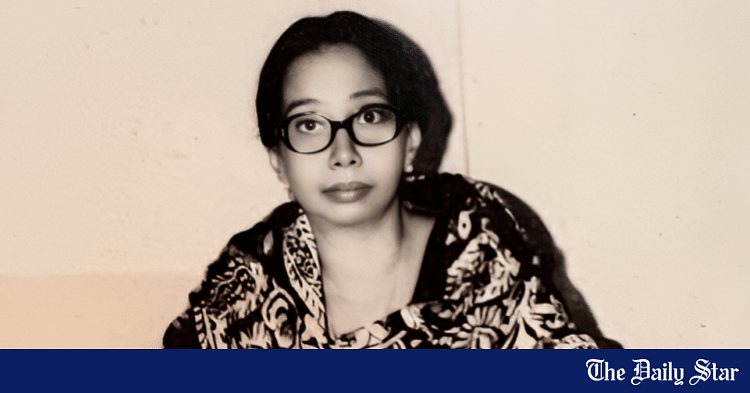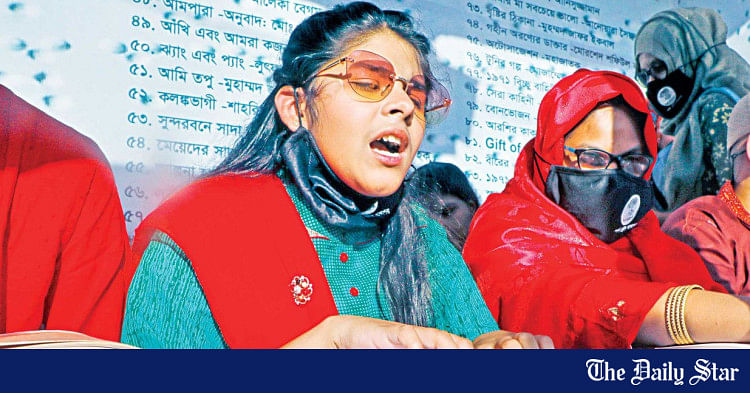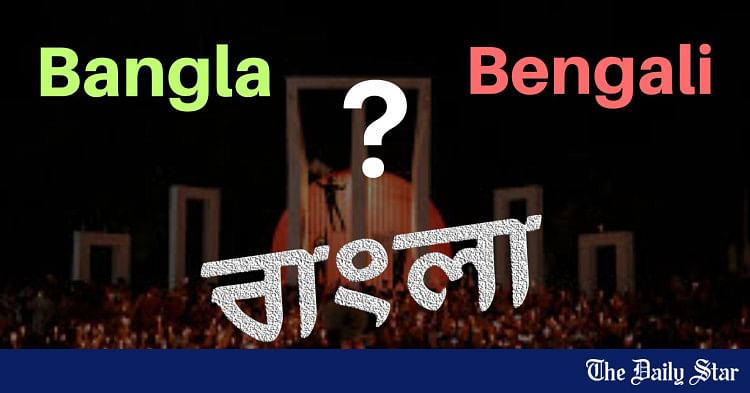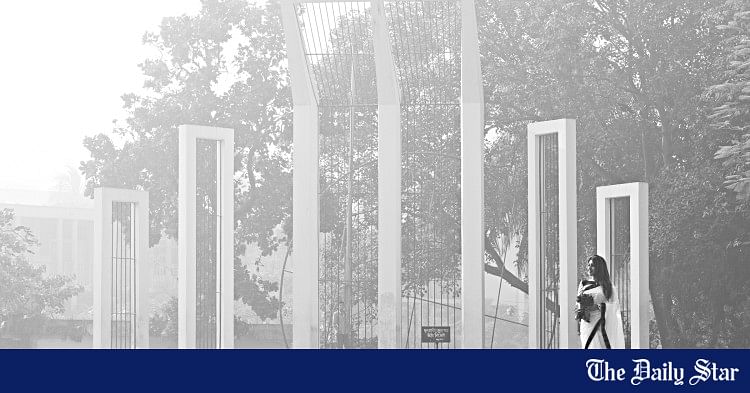BHADRALOK TO SUSHEEL: Language, identity and hegemony in post-colonial Bangladesh
Abdul Monaiem Kudrot Ullah 21 February, 2025, 00:00

IN MY small town, Bheramara, Ekushey February was a ritual. Barefoot we roamed, demanding the same of every passerby — a shedding of shoes, a mark of respect. Bangla, bhasha shaheed — these weren’t just words, they were close to the heart, a pulse. And how could they not be? Bangladesh, a nation birthed from language, its very being woven into the struggle for self-determination. The Language Movement of 1952, a defiant cry, the bedrock of a future. Yet, this sacred connection to language, this fierce embrace of identity, has twisted, contorted, into something else. Linguistic fundamentalism. A rigidity, an exclusion, a weapon. How did we arrive here? To understand this linguistic puritanism, this policing of tongues, we must excavate the layers of history, the sediment of Orientalism, the lingering poison of colonial legacy, the subtle, insidious grip of elite linguistic hegemony. These forces, these whispers from the past, have not just shaped policies, they have sculpted the very way we perceive language, the way it is politicised, the way it is used, even against ourselves, in this postcolonial landscape of South Asia.
Orientalism and the colonial construction of language
THE very term ‘Orientalism’ carries within it the unmistakable stench of empire. It is not merely a descriptor but an instrument — a linguistic scalpel wielded by colonial hands to carve the world into binaries: the west and the rest, the civilised and the exotic, the rational and the irrational. The ‘Orient’ was not discovered; it was manufactured, a convenient fiction — seductive yet subordinate, fascinating yet fundamentally flawed.
And like all imperial constructs, this was not confined to mere rhetoric; it was embedded into the very foundations of colonial rule. Consider language, the primary conduit of culture and identity. The British did not simply govern; they imposed. Their language — English — was enthroned as the language of power, the medium of governance, administration and prestige. The dialects and tongues of the subcontinent, the linguistic arteries of its civilisations, were systematically demoted. They were not just marginalised but ideologically vilified, their vibrancy dismissed as provincial, their speakers relegated to the periphery of power.
The intent was clear: this was not about efficiency; it was about hegemony. Language became a tool of hierarchy, a marker of worth, a means of stratification. To be fluent in English was not merely to acquire a skill but to ascend in the colonial pecking order. It was to be deemed cultured, refined, and, by extension, superior. This was not just the mechanics of empire; it was its very ethos — a deliberate, methodical assertion of western dominance, carefully disguised as enlightenment.
The making of the bhadralok: a tale of assimilation and abandonment
IN THEIR eagerness to secure a place in the colonial order, the Bengali elite absorbed the ethos of empire with an unsettling zeal. English became their scripture, western manners their creed. In the process, they crafted a new identity — bhadralok — the self-proclaimed torchbearers of sophistication. This reinvention, however, came at a cost: a calculated estrangement from their own people, those dismissed as pa-fata-Chasha, the unpolished, the unworthy.
Authentic local traditions — attire, cuisine, even the intimate comforts of home — were recast as relics of backwardness. To be ‘modern’ meant to erase oneself, to become a mirror reflecting the coloniser’s gaze. The British, ever shrewd, encouraged this transformation, entrenching a hierarchy that kept power firmly within a compliant, anglicised minority.
Calcutta: the imperial workshop of cultural division
THIS so-called Bengali Renaissance, so carefully cultivated under British patronage, bloomed in Calcutta, producing an intermediary class — overwhelmingly upper-caste Hindus — who became the loyal functionaries of the Raj. Their western education secured them access to privilege, but it also widened the gulf between them and the rest of Bengal.
Colonial policy, calculated and deliberate, positioned these elites as cultural and administrative gatekeepers, reinforcing a linguistic and social elitism that left East Bengal in the shadows. Folk traditions, rural dialects, indigenous wisdom — all were pushed to the margins, deemed too crude for the empire’s grand narrative. English was the passport to power, but only a select few were granted passage.
The internalisation of a hierarchy
OVER time, this hierarchy ceased to be simply imposed — it was embraced. Calcutta’s elite, eager to maintain their proximity to power, distanced themselves from the rural poor, dismissing indigenous customs as impediments to progress. Clothing, cuisine and daily rituals — once markers of identity — became symbols of provinciality, to be discarded in favour of European refinement.
The Bengali Renaissance of the 19th and early 20th centuries, though celebrated for its intellectual achievements, further solidified this divide. Its leaders, shaped by western education, championed a sanitised, ‘susheel’ culture that alienated the vernacular-speaking majority. British policies, carefully orchestrated, ensured that this elite class remained dependent on colonial structures while leaving the masses locked out of opportunity.
The consequence was a fractured society, where linguistic and cultural barriers, first drawn by colonial hands, were later reinforced from within. East Bengal — destined to become Bangladesh — remained on the periphery, denied the same access to English education and the advantages it conferred. What began as a colonial strategy of control became a self-sustaining system of exclusion, a legacy that lingers long after the empire’s flags were lowered.
Linguistic evolution and divergence after 1947
THE writers, the poets, they began to mimic the English. A shadow of their literature fell across the page, a borrowed cadence. In Calcutta, amongst the elite, there was this surrender, a quiet acceptance of British cultural dominance. They shaped their own literature, their own culture, into a pale reflection of what the colonisers had created. Even later, after the 1930s, when the characters became a little more local, a little more familiar, it was still through a British lens, a British gaze. And then, partition. The line drawn, a new nation born — East Bengal. And with it, a language beginning to breathe differently. Like American English, finding its own rhythm, Bangladeshi Bangla started to move away from the Sanskritised, almost brittle, dialect of Calcutta. It wasn’t just a change in words, but something deeper — a nation, finally, trying to find its own voice, its own story and a language trying to open itself, to include more, to reflect the lives of ordinary people. But there was resistance, of course. Those who believed in some pure, unchanging form of the language, who clung to the idea that Calcutta held the only true way. So, this new Bangla, this Bangladeshi Bangla, became more than just a language. It became a symbol of identity, of self-assertion. It became a quiet rebellion against the old hierarchies, the linguistic elitism that had been left behind by the British. It became a way, perhaps, to finally step out of the long shadow of the Raj.
Language, power and the politics of identity in postcolonial East Bengal
THE partition of British India in 1947 placed East Bengal within the newly created state of Pakistan, a nation ostensibly founded on the principles of Muslim nationalism. For Bengali Muslims, this was expected to mark a fresh beginning, with Dhaka University emerging as the intellectual and cultural nucleus of a new elite — one that sought recognition within the broader framework of Pakistan. Yet, the linguistic and cultural asymmetries between East and West Pakistan quickly surfaced as a fault line in the nascent state’s political landscape.
The imposition of Urdu as the sole national language by the ruling elite in Pakistan was viewed in East Bengal as an unmistakable act of cultural domination. Far from being a unifying force, the language policy reinforced existing regional grievances, transforming Bengali into both a symbol of resistance and a crucial marker of political identity. The Language Movement of 1952 became a defining moment, challenging the state’s attempt to enforce homogeneity and laying the groundwork for the assertion of Bengali nationalism that would later culminate in the struggle for independence.
However, post-independence Bangladesh did not entirely break free from the colonial legacy of linguistic hierarchy. The very forces that had mobilised around the demand for linguistic rights became entrenched in a linguistic majoritarianism that mirrored earlier exclusions. In its efforts to consolidate a unified national identity, the Bangladeshi state elevated Bengali at the expense of other languages spoken within its borders — Chakma, Santali and Urdu among them. This linguistic fundamentalism, while born from the experience of marginalisation, has often led to the marginalisation of others, reinforcing the same structures of exclusion that had once been imposed upon Bengalis.
A particularly paradoxical outcome has been the growing ambivalence towards foreign languages, including English. While English remains a global lingua franca and an essential tool for economic and intellectual engagement, it is often perceived with suspicion — a residual effect of the colonial experience. The enduring legacy of Orientalist knowledge production, which framed language as both an instrument of domination and a marker of civilisation, continues to shape Bangladesh’s contested relationship with linguistic diversity and global integration.
Linguistic hegemony and politics of exclusion in Bangladesh
A CRITICAL aspect of Bangladesh’s linguistic landscape is the political rhetoric that has shaped attitudes towards English in official and academic spheres. The post-independence elite — the newly emerged susheel class — embedded itself within the Awami League’s construction of Bengali nationalism, drawing its intellectual and cultural moorings from Calcutta and Shantiniketan. While cultural movements played a significant role in galvanising support for the Liberation War, those who championed this vision often remained insulated from the direct experiences of conflict and suffering. Yet, they assumed the authority to dictate the contours of Bangladesh’s cultural and intellectual discourse, narrowing it to a singular, homogenised Bengali identity — rooted in Promito Bangla as spoken in Calcutta.
This essentialised notion of Bengali culture actively marginalised regional linguistic variations and local heritage, rejecting diverse narratives that could have contributed to a richer and more inclusive national identity. A rigid binary was established, wherein conformity to this elite-determined cultural framework was equated with being ‘cultured,’ while deviations — particularly those incorporating religious traditions or local dialects — were dismissed as regressive or politically suspect. With media and academic institutions soon falling under this cultural monopoly, the susheel class became the self-appointed arbiters of cultural legitimacy. The result was a profound schism: Islamic rituals and Bengali culture were framed as irreconcilable, leading to a protracted ideological contestation that continues to shape national discourse.
While the Language Movement of 1952 justifiably resisted the imposition of Urdu, the subsequent rejection of English as a primary medium of higher education and governance has had long-term consequences. The rhetoric of ‘Sarbostore Bangla’ (Bengali at all levels), while rooted in nationalist sentiment, inadvertently disadvantaged those outside elite circles. This became evident in institutional settings where English proficiency was a prerequisite for advancement. For instance, when I joined the Bangladesh Navy as a cadet, the first directive was clear: ‘No vernacular.’ Those from urban backgrounds or English-medium institutions navigated this transition with ease, while those from rural backgrounds — previously assured that Bengali alone would suffice — found themselves at a disadvantage. The promise of linguistic egalitarianism had, in reality, reinforced structural inequalities.
This ideological rigidity was further reinforced by elite institutions that, while publicly endorsing Bengali exclusivity, ensured their own children accessed alternate, English-oriented education systems — both at home and abroad. In contrast to other postcolonial nations that have adopted bilingualism as a pragmatic tool for global engagement, Bangladesh’s resistance to English integration has stifled its competitiveness in international markets. The aversion to English, often framed as an anti-colonial stance, disregards its necessity in global trade, diplomacy, and scientific research. The educational divide has widened, with access to English proficiency — and the economic mobility it enables — remaining confined to the privileged few.
Yet, these entrenched hierarchies did not go unchallenged. The July Uprising directly confronted the dominance of elite cultural narratives, rejecting both the Calcutta-centric intellectual framework and the authority of the shusheel class in determining national identity. In doing so, they disrupted the monopoly over cultural legitimacy, forcing a reckoning with the plurality that had long been sidelined.
Breaking the sound barrier
SO THE Monsoon Uprising roars, tearing through the tired script of linguistic fundamentalism — this brittle, suffocating obsession with one language, one people, one history. A nation that chants in a single voice, marching in step, its feet shackled to the weight of a colonial hangover. Good luck with that. Because before Bangladesh can walk forward, it has to look over its shoulder. Confront the ghosts — the Orientalists who romanticised and ridiculed in the same breath., the colonial gatekeepers who decided which tongues were polished and which were provincial and the post-independence elite who inherited that power, who wrapped their own people in the same silk noose. Language was never just language. It was always power.
And it’s not just about Bengali. It’s about the silencing of voices. It’s about the fear of difference, the terror of plurality. We are told, again and again, that language is sacred, untouchable. That it must remain pure, preserved in a museum of nostalgia, polished and frozen like an artefact behind glass. But that’s a lie. Language moves. It leaks. It mutates. It doesn’t care for borders or politics or carefully curated purity. If we want to compete, if we want to be more than an island of self-congratulation, we need to step out into the world of languages — not just English, but Arabic, Japanese, Chinese — the tongues of trade, technology, revolution.
We need a new language politics — not the politics of exclusion, but of expansion, pluralism and inclusion. The quiet understanding that Bangladesh is not one voice, but many — not a monolith, but a symphony. Supporting minority languages isn’t just some sentimental act of redress — it’s a radical act of enrichment. It is an act of defiance against the idea that identity must be a singular thing, stitched in rigid lines.
And so, the real battle begins — not just against the old colonialists, but against their heirs, the ones who still police language, who still decide who is ‘cultured’ and who is not, the ones who mistake uniformity for strength and who hold onto linguistic hegemony like a relic from an empire that no longer exists.
But language is not a monument. It is a river. It carries things. It erodes old walls. It refuses to stay in place. And maybe, just maybe, that is where true unity lies — not in the silencing of voices, but in the listening.
Conclusion
‘AMAR Bhaier Rokte Rangano Ekushe February.’ The songs, the poetry, they tug at the heartstrings. Ekushey February, a date etched in blood, some martyrs, their sacrifice, ‘Shoto Shaheeder Rokte Gora’ — built on the blood of hundreds of martyrs. The emotion, raw and real, but so easily manipulated. The susheels, the self-proclaimed guardians of Bengali identity, the Awami League, riding the wave of sentiment, clinging to power. Millions mimed, thousands killed. A terrible price paid for this carefully crafted narrative. We were fooled, yes. But the young ones, Generation Z, they see through the charade. They’ve called time on this game. Or so they think.
The old elite, the susheels, the media, the bureaucratic leftovers, they’re still there, lurking in the shadows. And they’re not about to give up their grip on power. The game plan is changing, not ending. A new strategy, a new way to impose their cultural hegemony. Linguistic fundamentalism, this rigid, exclusionary approach to language, it’s not some spontaneous phenomenon. It’s a product of history, of colonialism, of Orientalism. The old hierarchies, the essentialist view of language, the elitism of the Bengali Renaissance — they all play their part. And the rhetoric around English, the global language, it’s just another tool, used to create divisions, to justify stagnation, to keep Bangladesh from finding its place in the world.
To break free from this, Bangladesh has to confront its past, the ugly truths, and the uncomfortable realities. It has to embrace a different vision, one that’s pluralistic, inclusive, that understands that language and identity are not monolithic. Only then can it move beyond the divisions, the hatreds, the lies. Only then can it build a future that celebrates its diversity, its complexity, and its many voices — a future where language is not a weapon, but a bridge. The time for rethinking, for acting, is not just perfect. It’s long overdue.
Abdul Monaiem Kudrot Ullah is a retired captain of Bangladesh Navy and a cross-disciplinary researcher.

















































